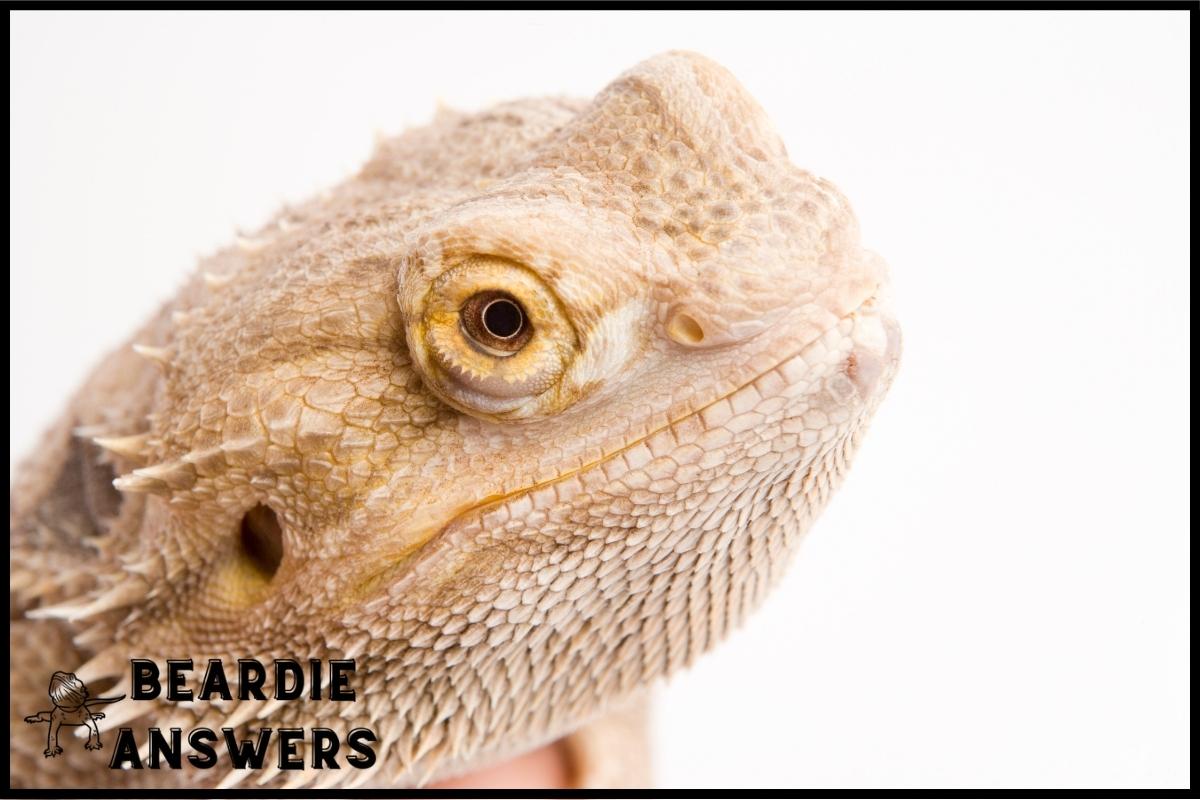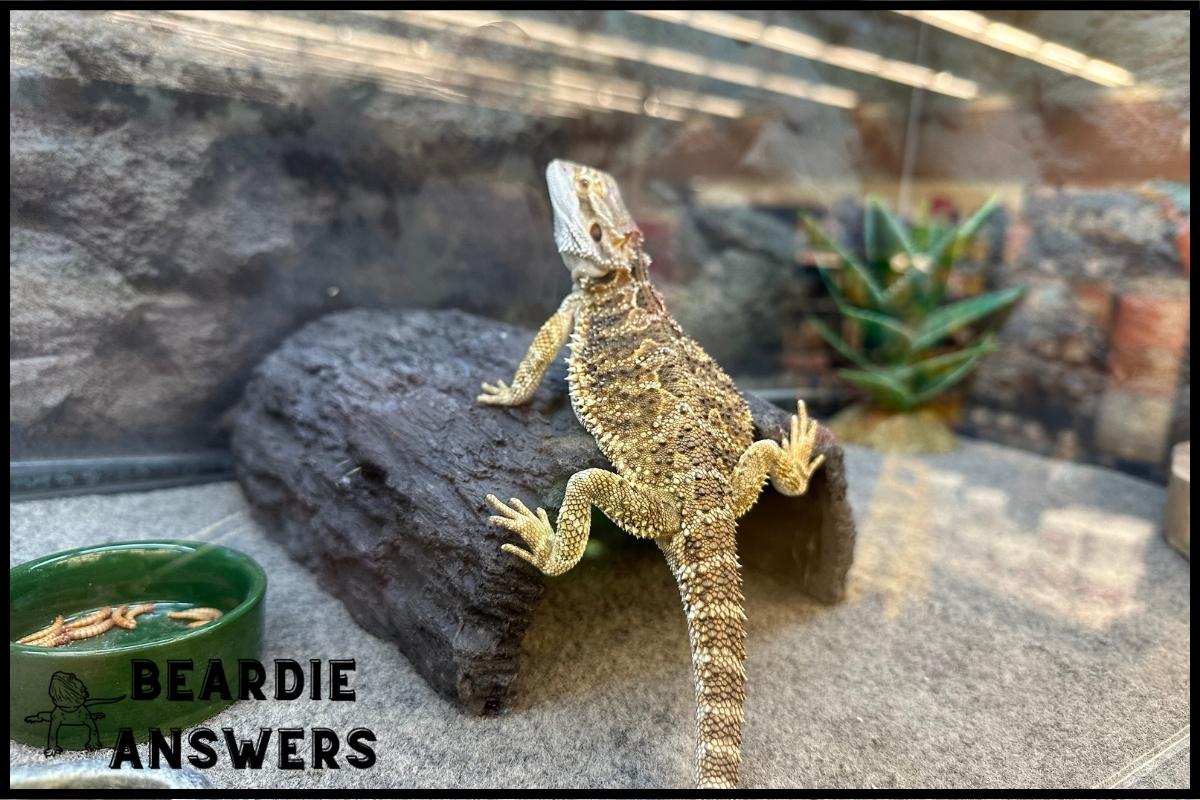When a female bearded dragon turns black, it may be a sign of several conditions. Stress, illness, or injury can cause color changes, but it can also be a sign that she is preparing to lay eggs. Providing a suitable nesting area can help alleviate stress and ensure a successful breeding process.
What You'll Learn
Causes Of Blackening In Female Bearded Dragons
Bearded dragons, like many other creatures, are composed of a mosaic of colors that range from yellow to red and even green. Like a chameleon, they can change the color pattern on their bodies through temperature regulation or calcium levels.
But when it comes to female bearded dragons, one color not seen in normal circumstances is black. When this occurs, it’s important to understand what could be causing the discoloration so you can provide proper care for your pet.
The most common cause of blackening in female bearded dragons is due to stress or illness. This is often triggered by changes in environment such as new housing arrangements or unexpected loud noises. Other factors include poor diet and inadequate lighting leading to vitamin deficiency and an imbalance of hormones which can also turn them black.
Troublesome signs of distress may manifest before full-body blackening appears with reduced appetite, lethargy, excessive sleeping, hiding away from light sources or humans, abnormal shedding patterns, rapid breathing and weight loss being just some examples.
It’s important to keep an eye out for any concerning symptoms if blackening does occur as these may indicate underlying health problems requiring medical attention. With appropriate environmental enrichment and careful monitoring unseen issues can be prevented before they become more serious – allowing your dragon to live a happy life free from unnecessary suffering.
Signs Of Stress In Female Bearded Dragons
She’s been really inactive lately; I’m worried she’s stressed.
Her appetite has changed a lot too – she won’t eat anything she used to love.
And, I’ve noticed her skin’s getting darker – I think it’s a sign of stress.
Inactivity
One of the most common signs of stress in female bearded dragons is inactivity.
If your dragon is not socializing, exploring its enclosure or engaging with you, it could be an indication that they are under stress.
This can be caused by a number of factors such as too small an enclosure size or lack of interaction and stimulation.
To prevent this from happening, make sure to provide plenty of space for them to move around and interact with other people and animals when possible.
Additionally, regular handling sessions will help ensure that your pet feels comfortable and relaxed at all times.
Ultimately, providing proper care for your female bearded dragon can go a long way towards reducing feelings of stress and preventing blackening.
Change In Appetite
Another sign of stress in female bearded dragons is a change in appetite. This can indicate that the dragon’s body is having trouble regulating its temperature or adapting to environmental changes.
If you notice your pet eating less than usual, it could be an indication that they are feeling overwhelmed and need some extra care and attention. Make sure their enclosure has suitable temperature levels for them, as well as plenty of food options available for when they feel ready to eat again.
Paying close attention to these details will help ensure your dragon remains healthy and stress-free.
Darkening Skin Color
If you observe your pet’s skin darkening, this could be a sign that they are feeling heat stress. This is because darker colors absorb more heat and can cause the dragon to overheat.
To prevent this from occurring, make sure their enclosure temperature doesn’t exceed optimal levels for them.
Additionally, if you notice any hibernation behavior such as burying or hiding in cooler spots during the day, it may be time to adjust the environment so that your bearded dragon feels comfortable.
Paying attention to these signs of distress is essential in keeping your pet healthy and happy.
Illness In Female Bearded Dragons
Female bearded dragons can sometimes turn black due to an underlying illness. Hot spots, which are patches of darker skin, may appear on the body and tail as a result of infection or inflammation. Also, shedding patterns may become irregular if your dragon is sick, with some areas becoming thicker than usual.
If you notice any changes in your dragon’s behavior such as loss of appetite or lethargy, it’s important that you seek veterinary care immediately for proper diagnosis and treatment.
When female bearded dragons prepare to lay eggs they can display signs similar to those associated with illness. Their bodies will often darken significantly, particularly along their backs and tails. You may also see hot spots appearing just before egg laying season starts. However, unlike when they are ill these symptoms should not be accompanied by other changes in behavior like loss of appetite or excessive sleeping.
It is important to monitor your dragon closely during this time so that you can identify any potential problems early on and take appropriate action if necessary. Keep an eye out for other physical changes such as digging behaviors or decreased activity level that could indicate she is ready to lay her eggs soon.
With careful observation and regular health checks from your veterinarian, you can help ensure that your pet remains healthy throughout the process of egg laying.
Preparing To Lay Eggs
The process of preparing to lay eggs is an important part of the life cycle of female bearded dragons. As they approach this stage, their bodies undergo many changes that can be stressful and cause them to turn black in color.
A good way to illustrate this concept is with a story about one particular female bearded dragon. Alice was a young female bearded dragon who had just reached adulthood when her owner first noticed she had started turning black. After consulting with a veterinarian, it became clear that Alice was likely preparing for egg-laying season.
This meant making several adjustments to her routine such as increasing her calcium intake and providing more warmth from infrared light sources. She also began digging and nesting behavior which further indicated she was getting ready for egg incubation.
During this time, it was also essential for Alice’s owner to provide emotional support by handling her gently and spending extra quality time together so that she could feel safe during the transition period. With all these measures in place, Alice successfully laid two healthy clutches of eggs before returning to her normal coloring – reminding us how powerful a role stress plays when it comes to the health and wellbeing of our beloved reptilian friends!
Transitioning into the next topic: diet and nutrition are also key factors influencing a female bearded dragon’s overall health; understanding what foods will give them the best possible chance at success is paramount.
Diet And Nutrition For Female Bearded Dragons
Female bearded dragons have specific dietary needs that are essential for good health. It is important to feed them a variety of live insects, such as crickets, mealworms and waxworms. They should also receive fresh vegetables every day like collard greens, turnip greens, kale, squash and carrots. For proper nutrition it’s best to dust the food with vitamin supplements or calcium powder once or twice a week.
It’s also beneficial to provide your female bearded dragon with access to ultraviolet light (UVB). This helps her body absorb vitamins she needs from her diet more efficiently. You can purchase UVB bulbs specifically designed for reptiles at most pet stores. Providing this type of lighting will help keep your reptile healthy and happy in captivity.
In addition to providing an appropriate diet and necessary lighting, it’s important to maintain the right temperature within their environment as well. The ideal range lies between 78-84 degrees Fahrenheit during the day then dropping down slightly into the mid 70’s at night time.
With these environmental factors taken care of you can be sure that your female bearded dragon has everything she needs for optimal health and wellbeing.
Moving on now we’ll discuss how to properly care for your female beardie…
Care And Maintenance Of Female Bearded Dragons
It’s almost too easy to fall in love with the sweet and gentle nature of a female bearded dragon, but their care and maintenance can often be overlooked. As much as we’d like them to stay cute and cuddly forever, they need just as much attention and dedication as any other pet! Luckily, providing your lady beardie with proper care is actually quite simple – if you know what to do.
From providing the right temperature control to ensuring ample environmental enrichment, here are some key tips for keeping your female bearded dragon happy:
- Keep temperatures between 80-90°F during the day and 70-75°F at night using an appropriate thermometer or thermograph device.
- Create multiple shelter spots around the enclosure – such as hiding boxes, logs, etc.– so that your beardie can have plenty of places to hide when feeling stressed or threatened.
- Incorporate items like branches and rocks into her habitat for added stimulation; this will provide her with plenty of opportunities for climbing and exploration!
So if you’re looking for a new scaly friend who will bring joy into your life (and home), then look no further than a female bearded dragon! With regular checkups from an experienced veterinarian, along with these essential tips for care and maintenance, she’ll be sure to live happily ever after–or at least until it’s time for hibernation!
Conclusion
The blackening of a female bearded dragon can be alarming, but it is not always cause for concern.
In many cases, the color change is simply due to stress or illness, or may even be part of their natural process in preparing to lay eggs.
To ensure that your pet remains healthy and happy, provide her with a proper diet and environment, as well as regular care and maintenance.
With these measures in place, you can help keep your beloved reptile from going off the deep end – figuratively speaking!
Keep an eye on her health so that any issues are caught early and treated promptly; after all, prevention is worth its weight in gold.

Hi! My name is Bryan, I am the “one behind the words” here are BeardieAnswers.com. I believe that providing quality care and nutrition is the best way to ensure the health of your pet. Every beardie is special and deserves the best care and attention. If you have questions about your bearded dragon, please don’t hesitate to ask! View My Full Author Page




